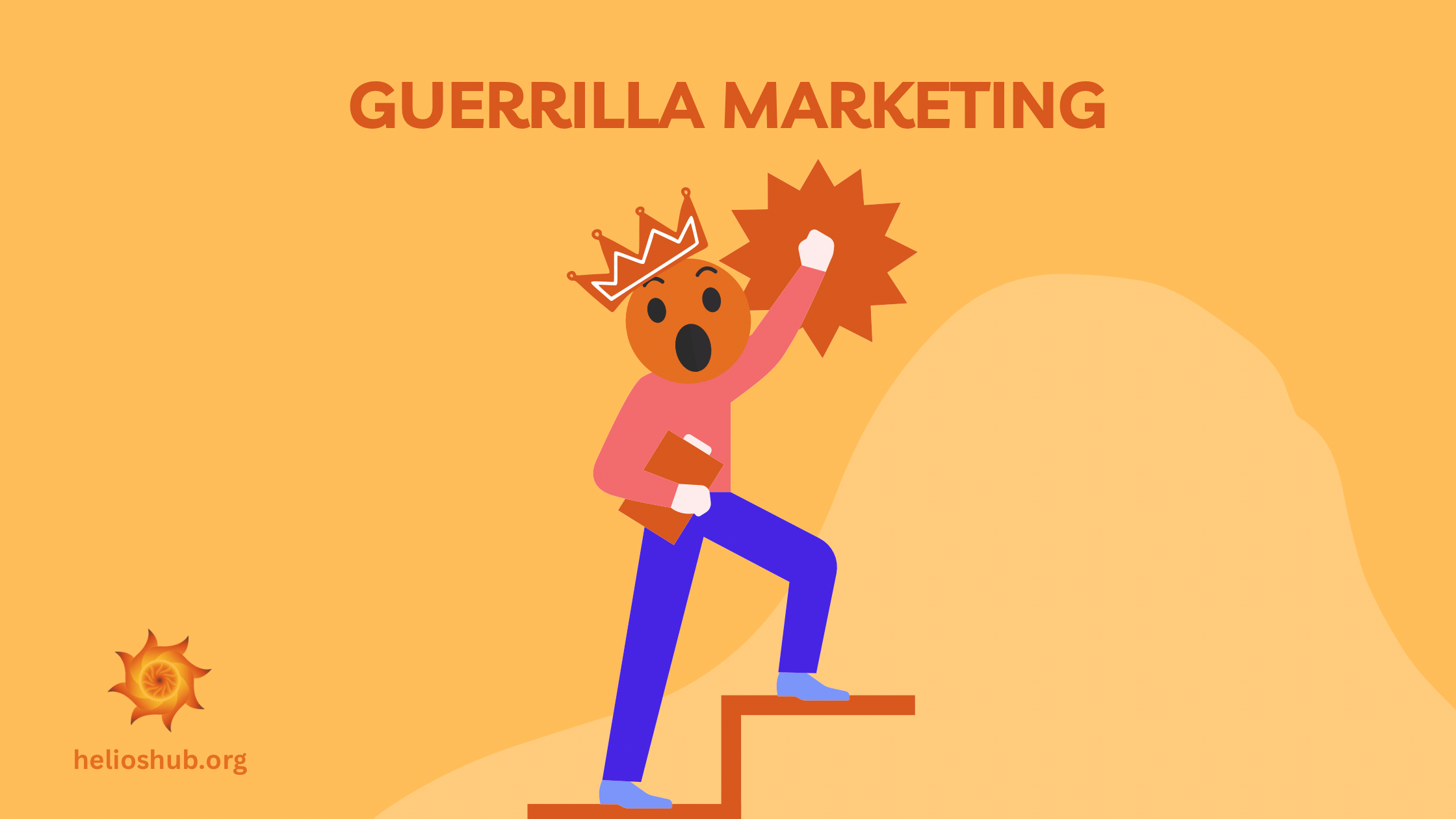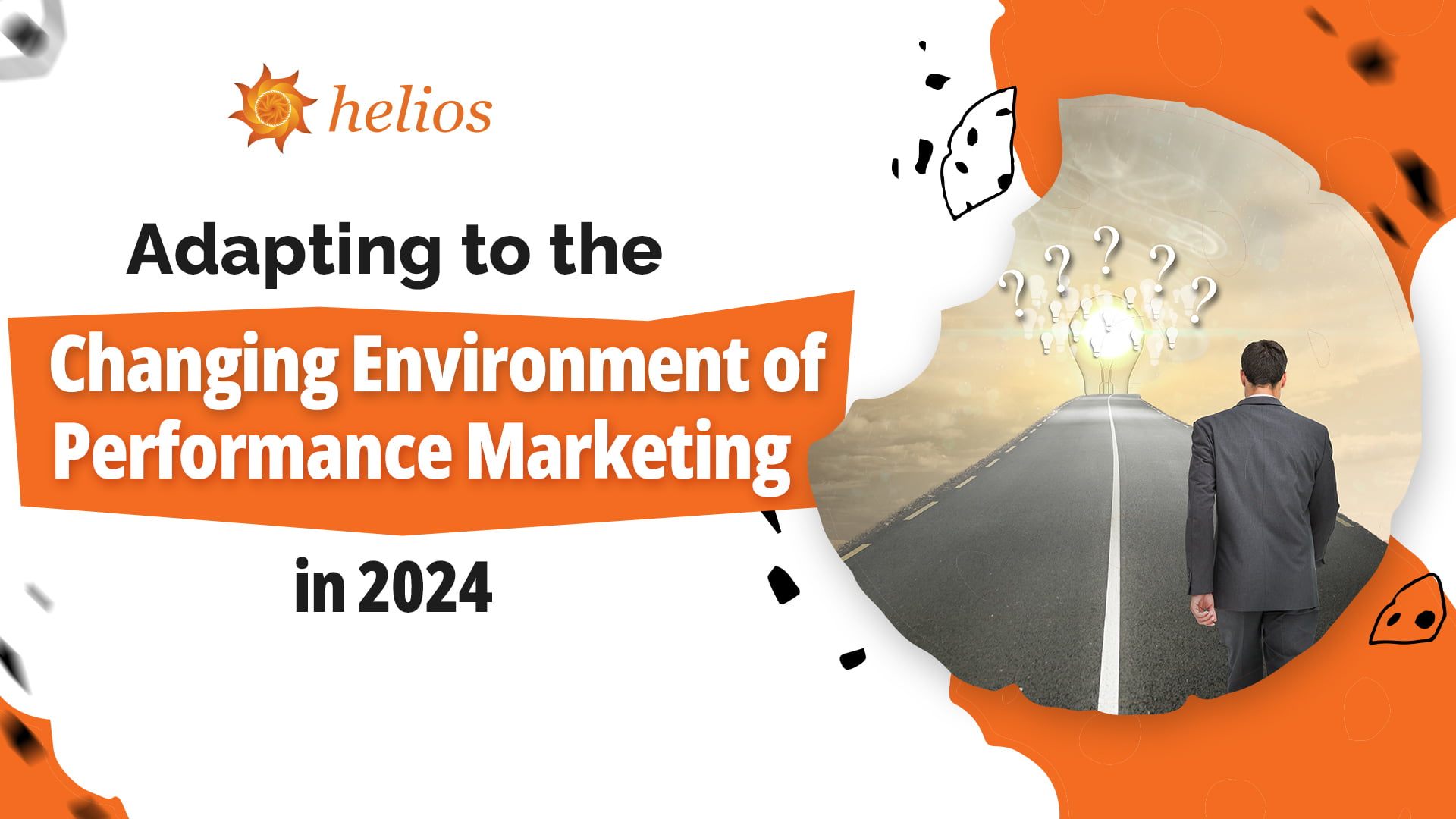Guerrilla marketing draws its name from “guerrilla” warfare, an irregular form of fighting involving a small group of combatants using tactics to fight and shock a larger enemy. In a similar fashion, the art of implying unconventional ways to generate maximum market buzz on a minimum budget is guerrilla marketing. Let’s find out what b2b guerrilla marketing is and how it can benefit your business.
What is B2B Guerrilla Marketing?
Jay Conrad Levinson first used & popularized the term guerrilla marketing in his book “Guerrilla Marketing” in the mid-1980s. The concept mainly aims to help smaller businesses marketize their products or services in peculiar ways to make an immense market impact at a lower cost. It varies from conventional marketing in a way that it includes a surprise element that attracts the maximum number of eyes from the target audience.
Guerrilla marketing grew popular in the early 2000s. In this blog, we will see how b2b guerrilla marketing can be a crucial strategy to extend the reach of your business. So, let’s begin!
B2B Guerrilla Marketing: Types & Scope
Guerrilla marketing is not new and has been in practice for almost four decades. But when we talk about guerrilla marketing, we generally think of creative & stunning advertising techniques to engage with end consumers. However, it may not be true all the time. B2B guerrilla marketing is as effective as it is for B2C. After all, B2B audiences are also people. So then, why shouldn’t you create an unforgettable experience in the B2B sphere?
Types of Guerrilla Marketing
1) Outdoor guerrilla marketing
This type of guerilla marketing includes placing something unusual in an outdoor environment. Outdoor guerrilla marketing generally happens in places with heavy footfall. Some examples of outdoor guerrilla marketing are graffiti, creating statues or replicas of objects, or showcasing products in the streets.
2) Indoor guerrilla marketing
As clear from the name, indoor guerrilla marketing uses indoor public spaces to generate publicity. It may include universities, railway stations, or malls. A famous real-life example of this type of marketing is the sponsored flash mob at Liverpool Street Station in 2009. The video got over 40 million YouTube views and won the TV commercial of the year award at the British Television Advertising Awards. The result was a whopping 52 percent increase in sales.
3) Event ambush guerrilla marketing
This type of guerrilla marketing includes promoting a business or any entity at an event planned for some other cause, such as a promotion event, music concert, festival, or sporting event. It sometimes even be without permission. The idea is to catch the attention of event audiences by surprise. A typical example can be the Fiji Water photobombing by a model holding a tray of water bottles in several paparazzi photos shot during the 2019 Golden Globes awards.
4) Experimental guerilla marketing
Experimental guerrilla marketing can combine any of the above-listed categories and take place anywhere to make people and products interact with each other. For example, you might have seen businesses distributing free samples of their products or services to their target audience.
Pros & Cons of Guerrilla Marketing
Pros of Guerilla Marketing
- Spend less: The primary reason to opt for Guerrilla marketing is its low cost compared to other marketing strategies
- It’s fun: Guerrilla marketing gives you complete freedom to be creative and generate unusual ideas that are catchy & fun
- Insightful: People’s reaction to your promotional activity allows you to understand how they feel about your brand
- Publicity: Guerrilla marketing campaigns often get viral on social media providing grand exposure to target audiences & media outlets Gain partners: Guerrilla marketing allows the development of mutually beneficial partnerships with the owners or organizers of festivals, venues, or brands
Cons of Guerrilla Marketing
- Risky: The chances of backfiring a guerrilla marketing campaign are equal, and you could lose money due to unforeseen circumstances
- Unsettling for the audience: Sometimes, guerrilla marketing can be frightening or embarrassing for audiences as it involves ambushing, filming, or shocking tactics
- Controversial: Running a guerrilla campaign can sometimes put you into legal battles causing negative publicity
- Losing stakeholders’ trust: Getting approval from the executive team becomes difficult if a campaign is too risky or unconventional
Is B2B Guerrilla Marketing Right for you?
Guerrilla marketing effectively leaves a lasting impression on people’s minds. Although, there are always chances of a campaign backfiring if not executed correctly. Before you opt for a guerrilla marketing campaign, you must be 100% sure. Here’s how you can find out if it is suitable for your brand:
- Is your idea original and exciting for surprising and engaging people? Does it have the element to go viral?
- Does it target your potential customer in a legal & respectful way?
- Does it allow people to participate?
- Does it convey the message you intend to send to the right target audience?
- Will it allow you to measure results?
Guerrilla marketing can be fatal for businesses without considering potential risks and backfiring possibilities. However, if you have accurately calculated the risks and ROI projections, you may launch a campaign. Generally, big brands opt for guerrilla marketing hoping for global publicity and B2C reach. However, small brands can also use these tactics to gain popularity at local levels and gain B2B & B2C credibility. It may put the ball in your court at a meager cost, irrespective of the industry.
How to Set up a B2B Guerilla Marketing Campaign?
Here are some pro tips for creating the most effective guerilla marketing campaign strategy for your business:
Pick the right Audience & Location
For any marketing campaign, the first step is to identify the target audience and define marketing objectives. Your product or service is unique on its own. So, the target audience & location of promotion will also depend on what you are offering. Always remember that location is one of the most critical factors of a successful guerrilla marketing campaign.
Innovate an Idea & Technique
After you have found your target audience & a suitable location, it’s time to think of an idea that can work best for you. Try to keep an original idea that is actually yours and works out of the box. A stolen idea can always backfire. Besides, people like to see new things when it comes to guerilla marketing. But never forget the surprise element!
Execution
When you are ready with your plan, the next step is to execute it. A small mistake in the execution part can be costly. So, break your plan into well-defined steps. Then, use these steps most cost-effectively by considering all other possibilities. After all, guerrilla marketing aims to get maximum engagement at the minimum cost.
Measure Results
The ultimate step in a campaign is to measure the results. You can start by comparing the pre & post positions of company sales/traffic or whatever goal you set. It will help you understand how far you have come and what areas need more improvements.
The Final Word
Guerrilla marketing is an unusual marketing method that many companies ignore. However, it can be a game changer for many businesses at a low cost. If you are planning to start a guerrilla marketing campaign for the first time, it is always advisable to consult professionals. At Helios, we have helped a number of clients achieve their marketing goals with our process devised through scientific methods. Contact us today & let us help you create the best marketing strategy for your business.





